For the past two years, I've worked with Beam Center and the Brooklyn International High School on project-based curriculum in ten week cycles. In the spring of 2014, we built DIY Drum Pads using Arduino, MIDI, and GarageBand. This was part of a larger interdisciplinary project based on music and outlined in the World of Science Blog.
John Derian, the science teacher at the school, and Ben Walsh, the English teacher, are instrumental in creating new curriculum based around technology, so during the summer of 2014, they prototyped a new project - the Digital Poetry Machine - that would allow the students to create poetry on an interactive wall.
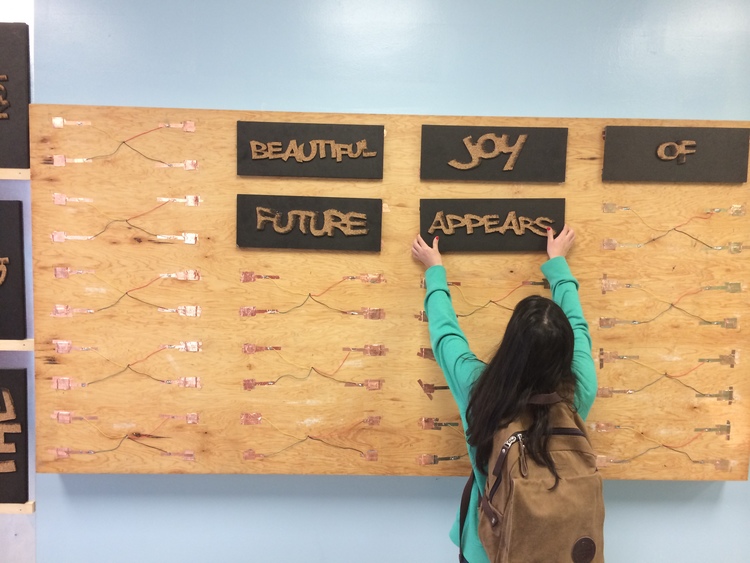
To do this, each word was programmed using Arduino on a small EEPROM chip. The students learned how to write data to the chip, and used index cards to label them.
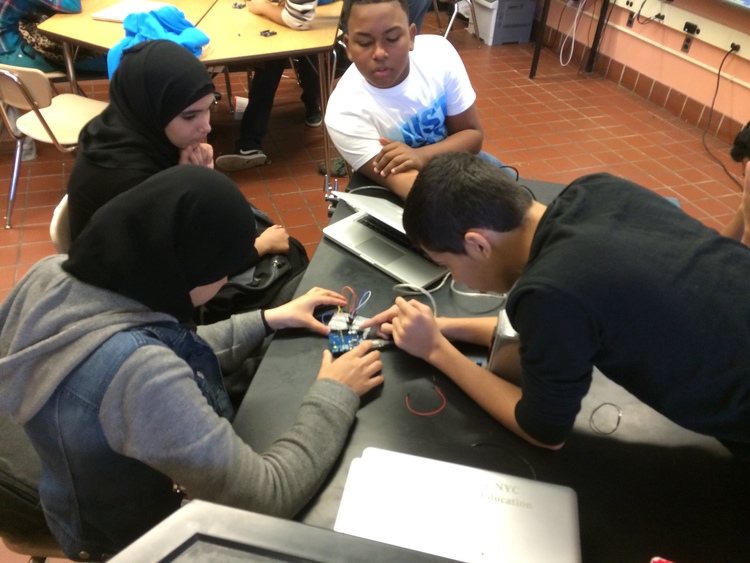
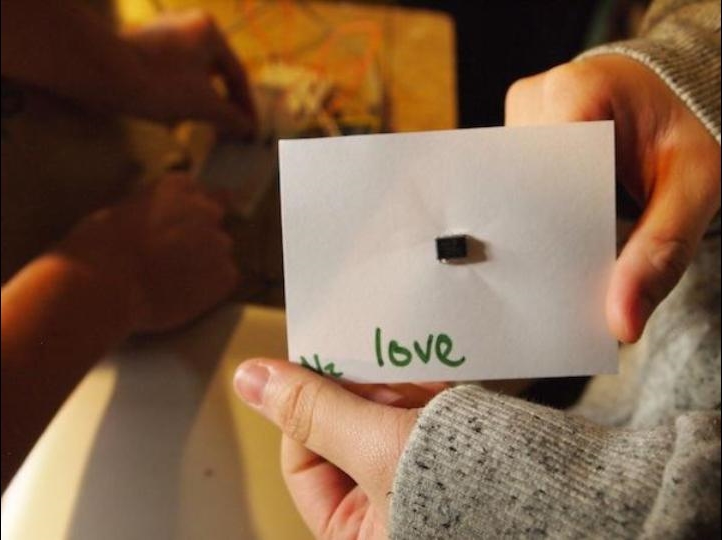
To display the words, we chose a font and students learned how to edit their words in Gimp, an open-source photo editing program, to prepare the words for laser-cutting. Then students took turns learning how to use the Epilog laser cutter to cut out over 100 words out of cork.
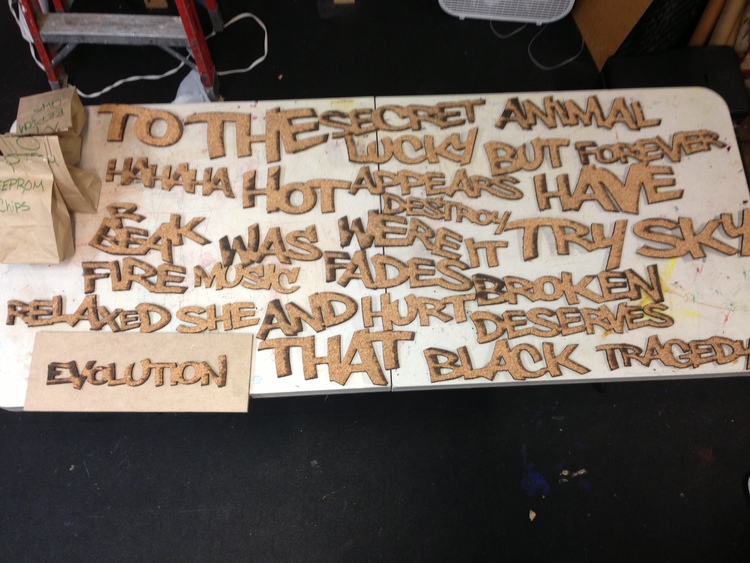
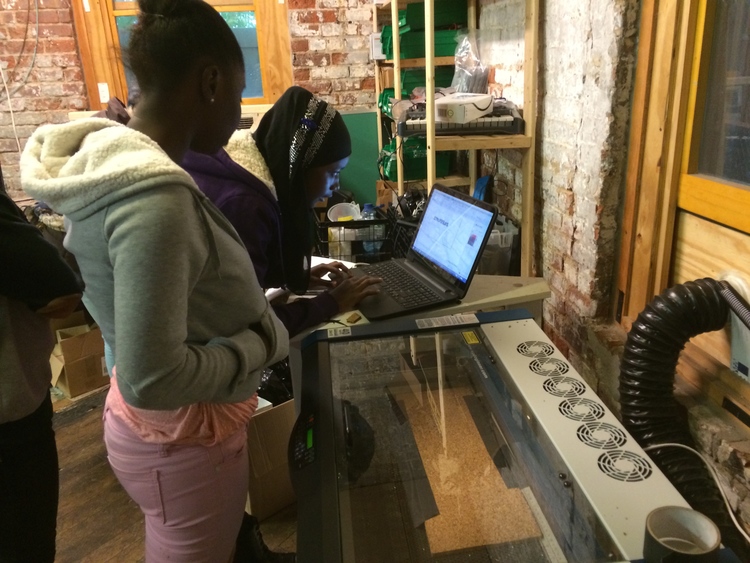
The chips were wired to magnets on the back of boards that were cut to size. They soldered the legs of the chips, which proved challenging. A few students then tested these to ensure that an Arduio could read the chip without an error.
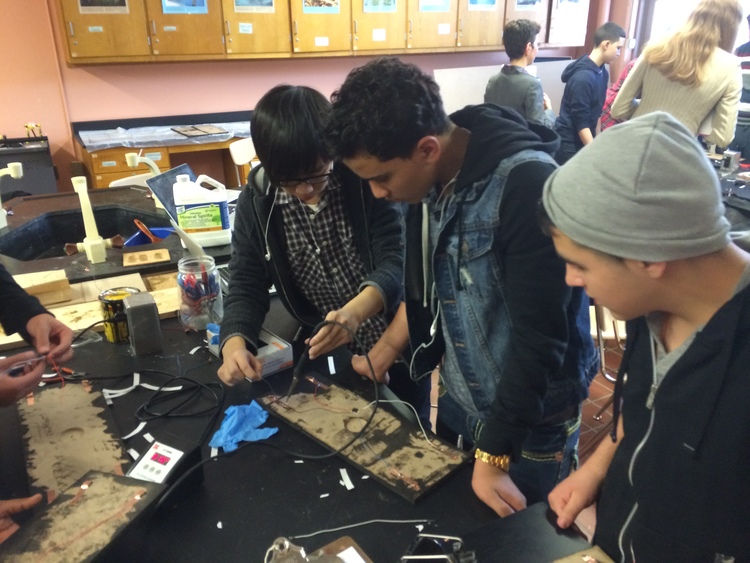
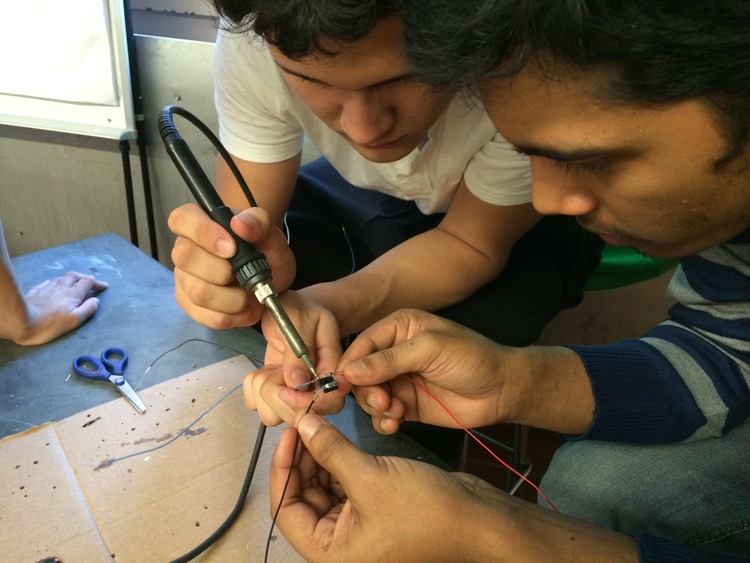
To read the words, we outfitted a large board with small metal squares that interfaced with the magnets on the boards. These squares were glued to the board in precise locations, and wired into a multiplexer so that an Arduino could read each word in order.
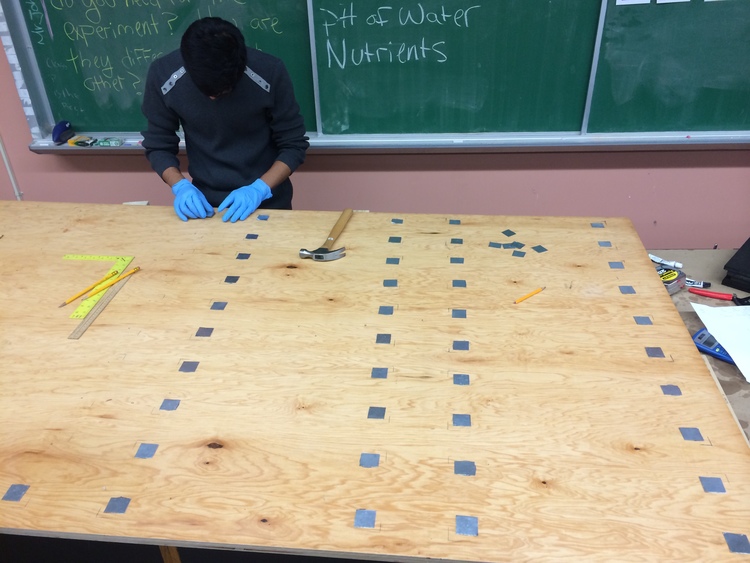
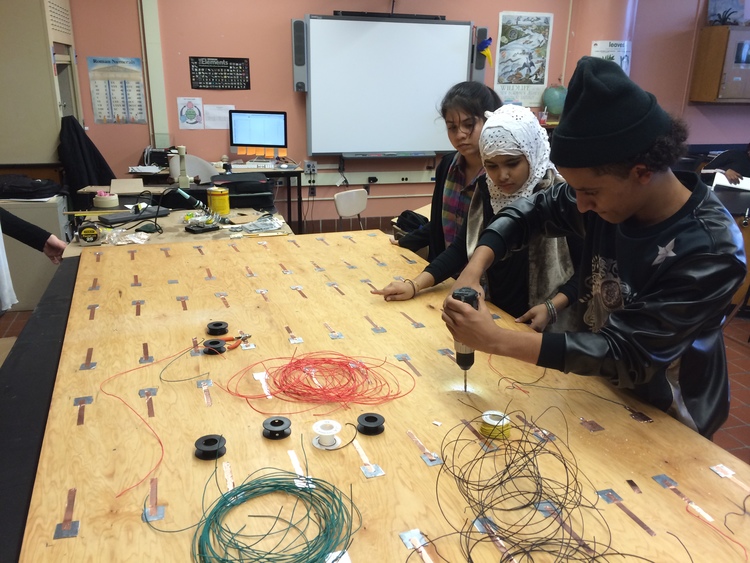
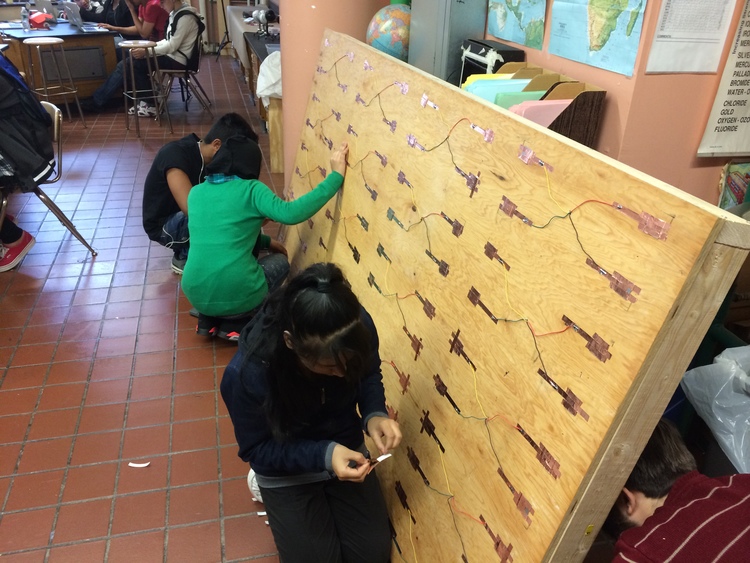
Once we were reading the words, we had to decide where the poems would be displayed. We chose Twitter as our platform, and implemented a simple Python script that could read the poem and upload it to a class Twitter account @BIHS_Poetry. We used a large button to send the poem to the internet.
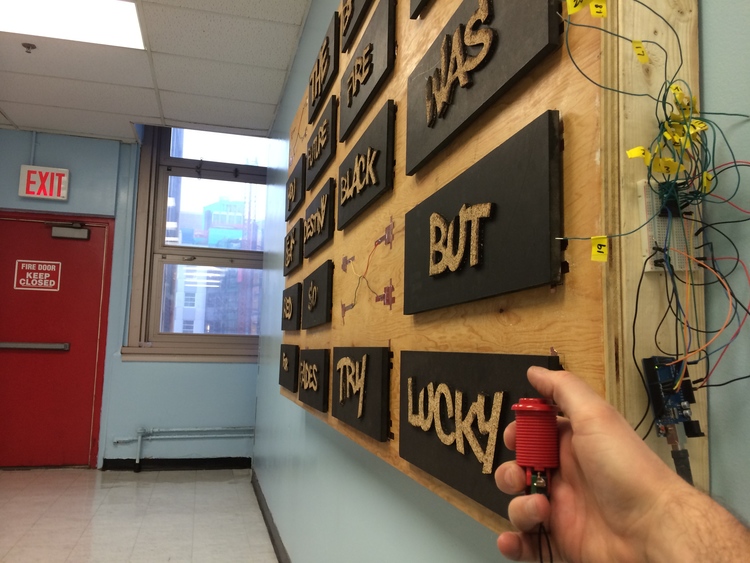
Using a frame and some aluminum sheets, we were able to mount the poetry machine and all of the words on the wall outside the classroom. Anyone walking past is able to rearrange the words and post a new poem to the Twitter account.

The scope of this project is larger than any other project I've worked on. The students learned about circuitry and physical computing using Arduino. They used wood tools to measure, cut, drill, and assemble the boards. They used design software to set up files for digital fabrication. They learned about web APIs, Python, and uploading data to Twitter. They also learned about building an installation, and how to construct and program something that can last for many months in their school.
Read more about the Digital Poetry Machine on John Derian's blog A World of Science